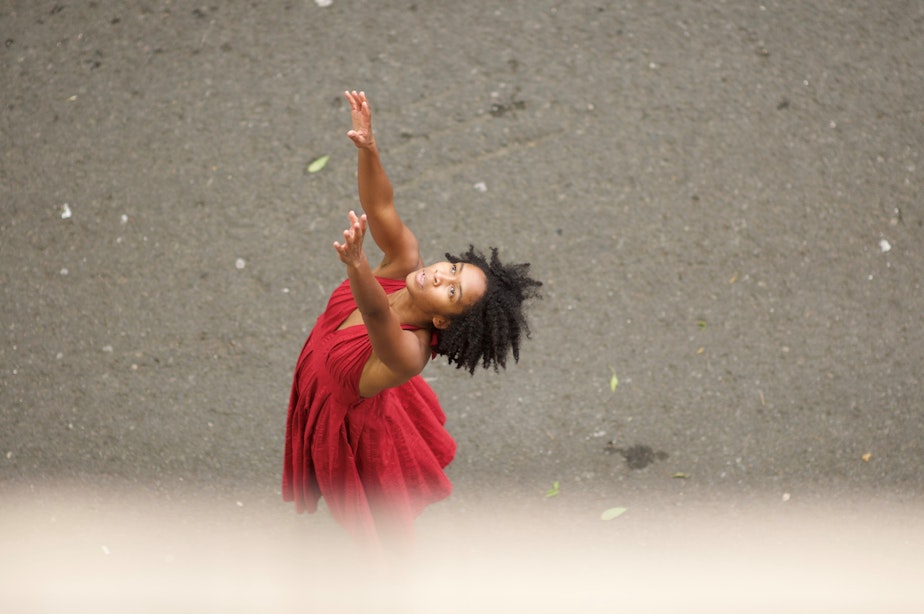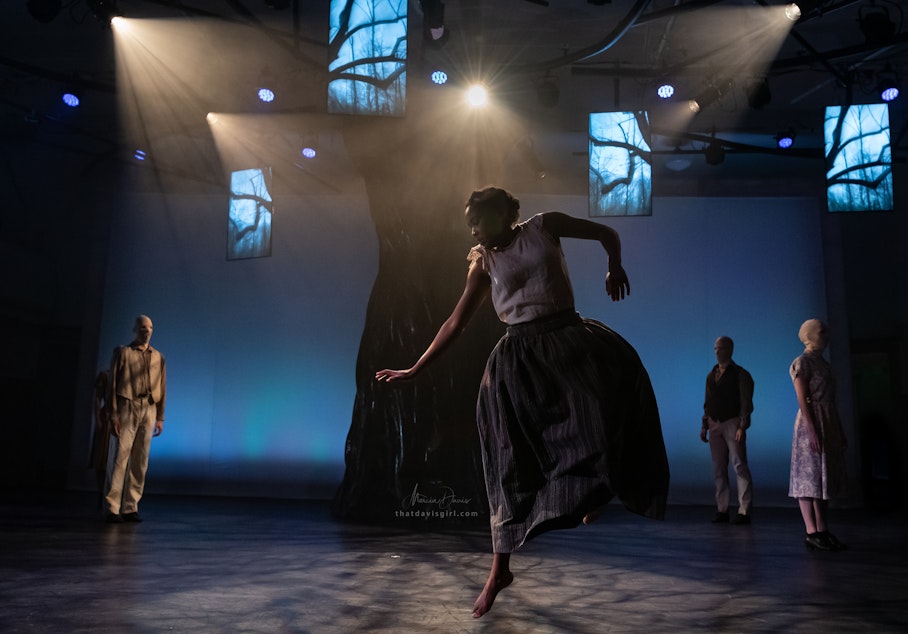Nia-Amina Minor finds artistic inspiration in the fight for racial justice

One of the first things you notice about Seattle dancer Nia-Amina Minor is her huge smile. She radiates a magnetic warmth. But this year, Minor has had a hard time maintaining a rosy worldview.
“It’s a very difficult time,” Minor says. “Every day is a new set of issues.”
It’s been six months since the pandemic forced theaters and nightclubs to close throughout Seattle, throwing artists like Minor out of work. With no signs of the virus letting up, performing artists and arts organizations have no idea when—or if—they’ll be able to resume live performances for paying audiences.
Meanwhile, the widespread public demonstrations against institutional racism and police brutality have pushed Seattle-area arts organizations to examine their own attitudes toward race. For Minor, the confluence of crises has taken a toll.
“It’s almost like I have to put on armor to move through my day-to-day,” Minor says.
In March, Minor’s employer, Seattle-based Spectrum Dance Theatre, cancelled its spring performances. Since then, to help pay the bills, she’s taught some online classes and picked up some freelance work. Although Minor continues to worry about finances, she’s been energized by the popular uprising to confront racism. In fact, the movement is a source of artistic inspiration.
Sponsored

Ever since she started dancing as a child in Los Angeles, Minor has been keenly aware of her identity as a Black female, and that awareness has influenced her artistic decisions.
“I wanted to be involved with work that didn’t try to separate what I was experiencing day-to-day and what I’m doing in the studio,” she says. “I didn’t want to be in a room where it was like ‘if you come through the threshold, leave your problems outside.’”
That’s why Minor chose to move to Seattle to work at Spectrum Dance Theatre. The company’s artistic Director Donald Byrd makes dances about everything from lynching to police violence against Black men.
Beyond Spectrum, Minor acknowledges her challenge to find like-minded artists in Seattle, which has a very small Black population compared to LA. But this summer, she collaborated with Pacific Northwest Ballet’s Amanda Morgan on a physically-distanced duet about Black women, and how they occupy physical and psychic space. Both dancers hope to continue this collaboration.
Sponsored
While she’s invigorated by the process of making socially conscious art, Minor admits it can sometimes take a toll on her mental health.
Sponsored
“I eat good meals, I try to take care of myself,” she says.
But her biggest source of comfort, aside from family and friends, comes from an awareness of the like-minded activist/artists who preceded her, paving the way for her own artistic vision.
“The singular thought of ‘I am not alone, nor have I ever been alone,’ has been really important for me,” she says.
Especially, these past few months spent in physical isolation from friends, family and colleagues. Although, like most performing artists, Minor as adapted to the new normal of Zoom collaborations and dance classes, and dance on film instead of in a theater with a live audience, she’s found her biggest inspiration in the ongoing demonstrations for racial justice.
“To see people moving in community, demanding action from the powers that be,” Minor explains. “For me that’s a type of choreography, that’s huge!”




